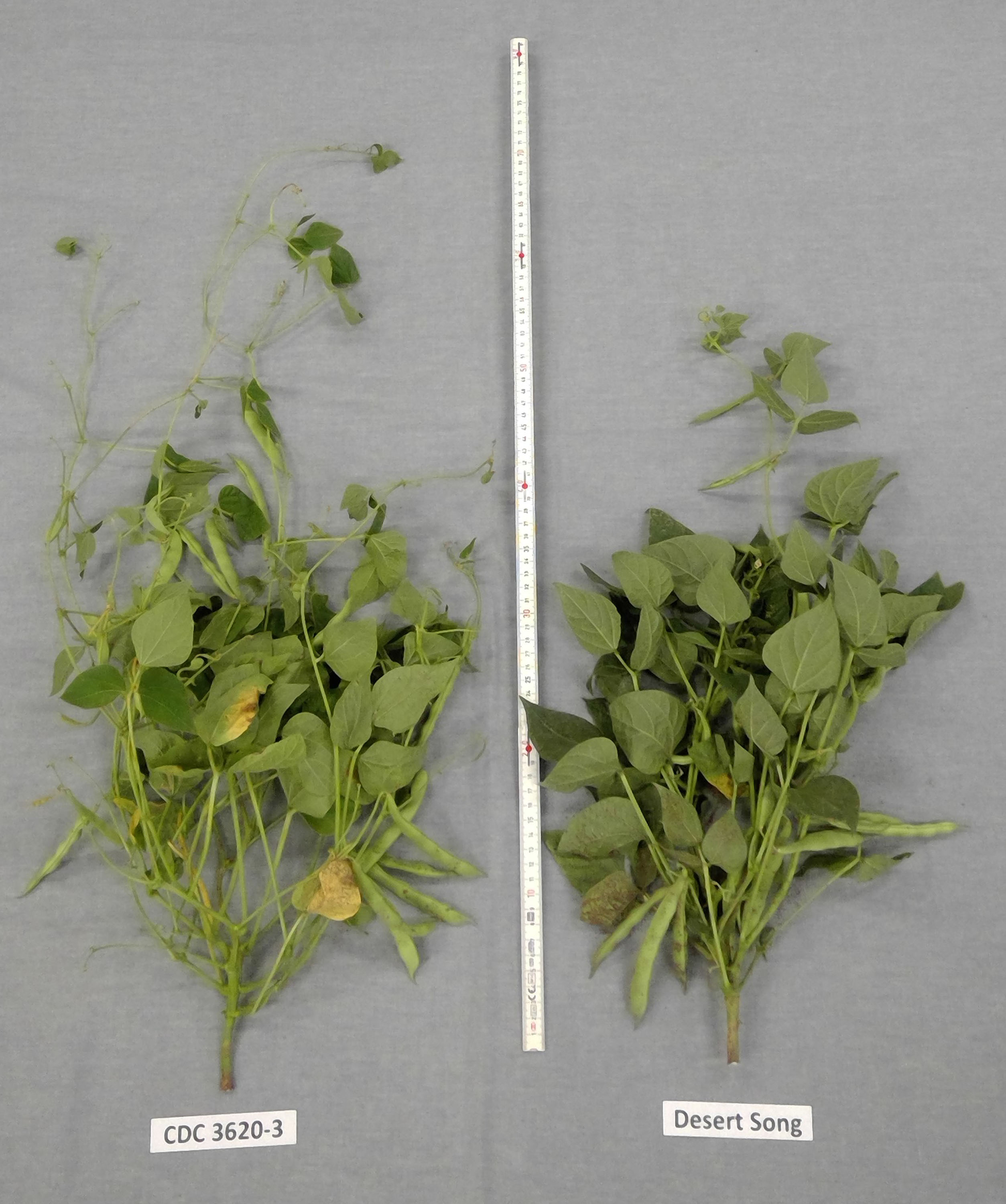CDC Ray
| Denomination: | 'CDC Ray' |
|---|---|
| Previously Proposed Denomination: | '3620-3' |
| Botanical Name: | Phaseolus vulgaris |
| Applicant/Holder: |
University of Saskatchewan Crop Development Centre 4D36 Agriculture Building, 51 Campus Drive Saskatoon, Saskatchewan S7N 5A8 Canada |
| Breeder: |
Kirstin Bett, University of Saskatchewan, Saskatoon, Saskatchewan |
| Application Date: | 2016-06-10 |
| Provisional Protection:: | 2016-06-10 |
| Application Number: | 16-8942 |
| Grant of Rights Date: | 2018-08-29 |
| Certificate Number: | 5805 |
| Grant of Rights Termination Date: | 2038-08-29 |
Variety Description
Variety used for comparison: 'Desert Song'
Summary: The guides of 'CDC Ray' are medium to long while they are short to medium for 'Desert Song'. The upper side of the leaf of 'CDC Ray' is light to medium green whereas the leaf of 'Desert Song' is medium to dark green. The terminal leaflet of 'CDC Ray' is circular to quadrangular while that of 'Desert Song' is triangular to circular. The main colour of the seed of 'CDC Ray' is violet while it is red for 'Desert Song'.
Description:
PLANT: dwarf and indeterminate growth type, medium to long guides, 50% of plants begin flowering early to mid-season
LEAF: light to medium green, weak rugosity
TERMINAL LEAFLET: medium sized, circular to quadrangular shaped, medium to long tip
INFLORESCENCE: predominantly positioned in foliage at full flowering
FLOWER: white standard, white wing
POD: ovate in cross-section, green ground colour, secondary colour distributed sparsely as violet flecks, stringiness of ventral suture present, absent or very weak degree of curvature, acute to truncate at distal part excluding beak, weak curvature of beak, smooth or slightly rough surface, moderate constrictions between beans at dry stage
SEED: Flor de Junio type, medium weight, circular to elliptic shape in longitudinal cross-section, medium elliptic shape in cross-section, medium width in cross-section, medium length, bi-coloured, mainly violet, mottled beige to yellow secondary colour distributed over entire seed surface
Origin & Breeding History: 'CDC Ray' was developed at the Crop Development Centre at the University of Saskatchewan in Saskatoon, Saskatchewan. It was derived from an F2 single plant selection from the cross 'Mejorado'/ '2818B-1-2-F4' made in 2006. Screening and selection was done from the F3 to F8 generations. Selection was based on days to flower, days to maturity, yield, plant height, lodging, pod clearance, seed weight, disease resistance and canning traits. In the F6 generation, single plants were selected and the resulting progeny were grown in plots for two generations with selection for uniformity for days to maturity, plant type, seed size and resistance to anthracnose race 73. In the F9 generation, 28 sub-lines were used to establish breeder seed. 'CDC Ray' was evaluated in Short Season Narrow Row Dry Bean Cooperative Registration Trials for three years; 2012, 2013 and 2014.
Tests & Trials: The comparative trials for 'CDC Ray' were conducted in the summer of 2016 and 2017 in Saskatoon, Saskatchewan. Plots consisted of 3 rows with a row spacing of 30 cm and a row length of 3.66 meters. Plants within a row were spaced at 47 seeds per square meter. There were 2 replicates.
Click on image for larger view

Bean: 'CDC Ray' (left) with reference variety 'Desert Song' (right)
Click on image for larger view

Bean: 'CDC Ray' (left) with reference variety 'Desert Song' (right)
Click on image for larger view

Bean: 'CDC Ray' (left) with reference variety 'Desert Song' (right)
- Date modified: